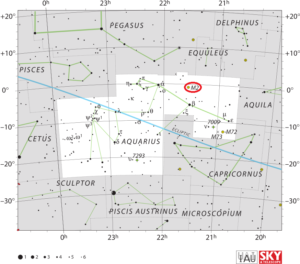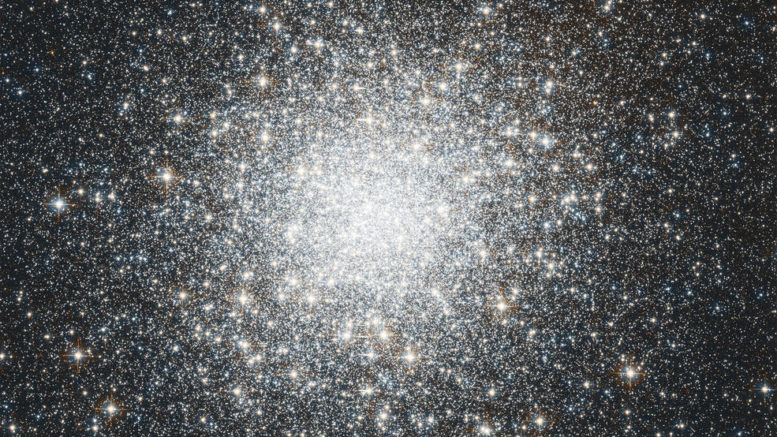This review of Messier 2 is to provide details about the observational history, details about how to find it in the sky, what the object could look like in your scope, and potential astrophotography options if available.
Messier 2 is one of the older globular clusters at 13 billion years old, which is just younger than the age of the galaxy at 13.8 billion years old. The galaxy has some of the greatest density of stars that one can see and some of the oldest stars in the Milky Way Galaxy.
| Description | |
| Visible From Pacific Northwest | June (Early AM Eastern Sky) To Late December (SW Sky Low To Horizon) |
| Best Time To Observe | July To October |
| Minimum Size Of Viewing Device | Small Telescopes + Binoculars (Naked Eye under perfect seeing conditions and no light pollution) |
| Object Type | Globular cluster |
| Number Of Stars In Cluster | 150,000 |
| Designations | Messier 2, M2, NGC 7089, GC 4678, Bode 70 |
| Right Ascension | 21h 33m 29s |
| Declination | -00d 49m 23s |
| Constellation | Aquarius |
| Absolute magnitude | -9 |
| Apparent magnitude | +6.3 |
| Apparent dimensions | 16 x 16 arc minutes |
| Object Radius | 87.3 light years |
| Distance From Earth | 37,500 light years |
History
M2 was discovered by the French astronomer Jean-Dominique Maraldi in 1746 while observing a comet with Jacques Cassini. It was first believed that this cluster was non-stellar because when viewed with a smaller telescope.
Charles Messier rediscovered it in 1760, but thought it was a nebula without any stars associated with it. William Herschel, in 1783, was the first to resolve individual stars in the cluster.
Locating M2 In The Sky
M2 can be found in the Aquarius constellation, five degrees north of the star Beta Aquarii.

Messier 2 location in Aquarius constellation. Image: IAU and Sky & Telescope magazine (Roger Sinnott & Rick Fienberg)
Viewing M2
The globular cluster can be observed in binoculars and small telescopes, but individual stars can only be seen in larger instruments, starting with 6-inch telescopes. A peculiar dark lane can be seen crossing the northeast edge of the cluster in larger telescopes.
Larger instruments are required to resolve the stars because the cluster is very far away and the stars in it are old, so only the rare stars similar to the Sun and the occasional blue straggler are visible. Blue stragglers are main sequence stars found in clusters, that appear bluer and more luminous than stars at the main sequence turn-off point for the cluster.
Photographing M2
With the right gear, such as an 8 inch telescope with auto guiding, it is indeed possible to get some photos of M2. To do this using a DSLR, about 1 hour of exposure is required with ISO 400 and 3 minute exposure length.
Sources And Further Reading
Descriptions of all of Messier Objects be found here.

Leave a comment